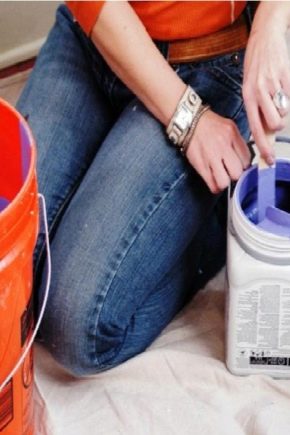What is the difference between water-based paint and water-dispersion paint?

Currently, paint is often used to perform indoor finishing work. Modern manufacturers offer customers many options that differ not only in cost, but also in certain properties.
Especially popular are water-based and water-dispersion compositions. When choosing a suitable composition, you should understand their distinctive qualities. To resolve this issue, it is necessary to familiarize yourself with the features of each type.

Features of water-based paint
By the name of this substance, one can understand that one of its main components is water. Pigments and polymers are used as additional components. All the components described are mixed into one mass in order to obtain a composition with a certain degree of viscosity.


Often, special solvents are added to the base of water-based paints. This is necessary to change the degree of viscosity. Most often, a solvent is added when it comes to working with various tools, for example, a spray gun.

A feature of this type of paint is that after painting the surface, the water evaporates. The polymers present in the base create a film with a high level of strength. The topcoat has good breathability... This is due to the presence of a porous surface that is highly resistant to climatic changes.
Particular attention should be paid to the fact that staining with water-based compositions can be carried out when the ambient temperature is no more than +4 degrees. Otherwise, the paint will not lay down correctly on the surface and all the work will have to be redone.

Also, various resins are often present in water-based compositions. These can be mineral, acrylic, or silicone polymers. Silicate resins are sometimes added to this list.
Properties of water-dispersion compositions
As for the main competitor of the previous type - water-dispersion compositions, this species also has its own individual properties.
The first thing to look out for are the main components. The main components of the paint are water dispersions and polymers. Polymers are acrylic and vinyl acetate.
Also mention should be made of the viscosity of the formulations. As with water-based paints, these options can be diluted with different tools. Basically, these compositions are produced in the form of a liquid paste. In the process, the paint is diluted to obtain the desired consistency.


It should also be said that the base can include from 15 to 40 components. These are various film formers, pigments and fillers... Also, water-based paints include emulsifiers and stabilizers as additional components.
When painting a surface with these compounds, you need to know that drying of the first layer usually takes about 40 minutes... But time is also influenced by other factors - weather conditions and air temperature.
A distinctive feature of water-dispersion paints is high resistance to ultraviolet radiation. The painted surface retains its color and original appearance for a long time.

Another equally significant feature of paints is the possibility of tinting. Using different formulations, you can achieve a unique shade without much difficulty.

And in the next video, you can listen to tips for tinting paints.
Differences of paints
Having dealt with the features of the compositions, you need to understand how they differ from each other. To begin with, it should be said that water-based paints are quite easily washed off with water, which cannot be said about water-dispersion compositions.
That is why the first option is not recommended for finishing work in rooms with high humidity.

The difference between the two compounds lies in the cost. Water-based paints are much cheaper in comparison with many other species.
Particular attention should be paid to the fact that water-based compositions are diluted with a solvent, as mentioned above. Also for these purposes, white spirit is often used. As for water-dispersion paints, they can be easily diluted with water. From this, the paint will not lose its quality.


How to choose?
Considering all of the above differences in paints, it is worth taking a responsible approach to the choice of a suitable composition. First, you should take into account the type of room for which one of the options will be used. As noted above, water-based paints are not particularly resistant to moisture. Therefore, it is best to give preference to water-dispersion compositions.

In addition, in the process of purchasing paint, you should pay attention to the following points:
- price... If you decide to spend a small amount on finishing work, then it is best to choose water-dispersion paints. They are much lower in price than water-based options;
- manufacturer... Give preference to proven brands that have been on the market for a long time and have won the favor of consumers. In this case, you will be completely confident in the quality and reliability of the formulations. In addition, good paints are durable;
- room design... If the future interior presupposes the presence of interesting and unusual shades in the decoration, then it is better to buy water-dispersion paint. In this case, using colors, you can achieve the desired color.


If your choice fell on water-based paint, then you should first familiarize yourself with the main types of compositions. For example, when using acrylic paints, no preliminary filling of the wall or ceiling is required. The paint is great for working on various types of surfaces.
Silicone resin formulations are great for high humidity environments... In addition, this type of dye has good resistance to the formation of fungi.
For working with brick or concrete surfaces, it is best to choose mineral compounds. But silicate dyes, subject to the technology of their application, are incredibly durable - up to 20 years.


For even more tips on choosing paint, see the next video.













The comment was sent successfully.